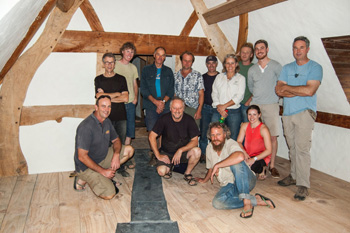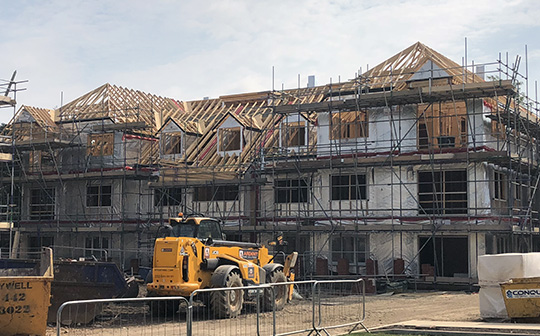
The Navajo plan from the company’s Legacy Collection was almost exactly what the Langers had in mind, but they wanted to customize it on both the interior and exterior.


Working with the Cookeville Honest Abe Log Homes sales team, Greg and Melissa Watson and Ed White, the Langers launched their design process in the spring of 2015. “The wood was planed to a smooth finish, and the Douglas fir timbers were nice and straight with a stylish chamfer.” “We were very familiar with post-and-beam construction, and right away we realized this was quality work,” Lynn recalled from her first visit to Honest Abe’s headquarters in Moss, Tennessee. The fact that Honest Abe’s design team can easily convert any plan to a timber frame coupled with the caliber of Honest Abe’s products convinced the Langers that the Tennessee-based company was a perfect fit for their project. Lynn said that she and Chris were drawn to Honest Abe Log Homes, which has been designing and manufacturing log and timber frame homes since 1979, because of its reputation in the industry. “We found Honest Abe, and now we have exactly what we wanted.” “It had to have a great room with high ceilings, an open floor plan and a cozy kitchen and dining room,” Lynn said. They’d owned a timber frame in Connecticut, so they approached the design of their new home with a clear vision. Originally from New England, the Langers retired to the Tennessee Upper Cumberland after finding land they liked online. “I guess you’d call what we wanted a mountain-style, arts-and-crafts bungalow,” Lynn said, explaining that their idea had been to create the feel of the early 20th century Craftsman architecture frequently seen in Adirondack Mountain lodges. Lynn and Chris Langer’s new timber frame home is a stunning example of how a vision becomes a forever home. To keep their skills current, Framers must keep up with new technologies by reading and speaking with other framers.Visit a Timber Frame Where a Vision Becomes a Forever Home If you have two years of on-the-job experience and some high school, college or industry courses in framing, you may be eligible for the framing credential. Once you successfully complete the required on-the-job training, technical training and exams, you are awarded a framing technician credential. To be certified as a Framer, you must complete an apprenticeship program.

Certification tells employers and other workers that you are a skilled professional. Even where certification is voluntary, it is still recommended. Check out our Related links to find out who to contact.

Where certification is not available, it may be possible to study as an apprentice through your local labour organization. Related work experience or completion of a framer program at a college or technical institute can reduce the time required to complete your apprenticeship.Ĭertification is available but voluntary in British Columbia and Saskatchewan. Some provinces and territories offer secondary school apprenticeship programs that allow high school students to work towards a career as a framer.įor more information, check out the apprenticeship section.Īpprenticeship training programs for framers vary across Canada, but generally involve at least one 12-month period, including both on-the-job training and in-class technical training. You may find it helpful to enrol in math, shop, industrial arts and mechanical drawing courses in high school. Most programs require a secondary school diploma or equivalent. Requirements for framer apprenticeship programs vary across Canada.
#Michael timber framer full#
Wages start at about 50 per cent of a journeyperson’s hourly rate and increase during your apprenticeship, until you reach the full rate. It involves both classroom studies and on-the-job training under the supervision of a certified Framer, called a journeyperson.Īs an apprentice, you earn while you learn and are paid by the hour while working on the job site. Apprenticeship is one way of starting out in the construction industry.


 0 kommentar(er)
0 kommentar(er)
